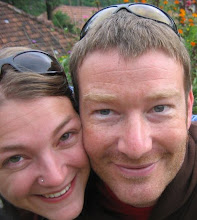 prophets Job and Abraham trod in biblical times. It is culturally smack-dab in the middle of the Turkey we've seen everywhere else and the Middle East that we're expecting. Here we've seen more than our fair share of men sporting huge moustaches and extremely baggy pants. We've also seen an increasing number of
prophets Job and Abraham trod in biblical times. It is culturally smack-dab in the middle of the Turkey we've seen everywhere else and the Middle East that we're expecting. Here we've seen more than our fair share of men sporting huge moustaches and extremely baggy pants. We've also seen an increasing number of  women in their chadors and a few with beautiful purple head scarves and curiously tatooed faces, reminisent of the ones that were all the rage in Ethiopia. While the number of tractors has not decreased, the number of horse-drawn carriages has skyrocketed, and we even spotted a few camels today. It is a facinating and friendly place to visit.
women in their chadors and a few with beautiful purple head scarves and curiously tatooed faces, reminisent of the ones that were all the rage in Ethiopia. While the number of tractors has not decreased, the number of horse-drawn carriages has skyrocketed, and we even spotted a few camels today. It is a facinating and friendly place to visit.The first order of business today was to visit the town of Harran, about 50km south of Urfa towards the Syrian border. Harran is one of the oldest continuously inhabited towns on Earth
 and home of some distinctive 'beehive' houses, the style of which dates back to the 3rd century BC (though the ones still standing in town are about 200 years old). They're excellent from the outside, but even better to take shelter in when a storm begins a-brewin', as we found out today.
and home of some distinctive 'beehive' houses, the style of which dates back to the 3rd century BC (though the ones still standing in town are about 200 years old). They're excellent from the outside, but even better to take shelter in when a storm begins a-brewin', as we found out today.Harran is also home to the first Crusader castle we've seen on this trip. While it's only partially intact, what remains is very cool and up to third world safety standards with enormous holes in the floor that could lead to a broken leg - or worse - if you weren't careful. Needless to say, while the castle and vistas were excellent we remained on high alert.

Back in Urfa we headed straight for the bazaar for a few hours of noodling around and scoping out photo opportunities. Happily, the Urfa bazaar was one of the happiest and friendliest bazaars we've encountered; vendors were more than happy to have us gawk and take pictures. At one point they swarmed us to take
 their photo. In the pigeon lane they were happy for us to enter the cages and even handle the merchandise! I really have no idea why they're so keen on selling live pigeson, though..
their photo. In the pigeon lane they were happy for us to enter the cages and even handle the merchandise! I really have no idea why they're so keen on selling live pigeson, though..


































